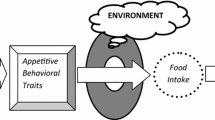Abstract
OBJECTIVE: To determine familial risk ratios for extreme obesity to aid in the design of obesity linkage studies. DESIGN: Family study of obesity SUBJECTS: 2349 first-degree relatives (parents and siblings) of 840 probands who are members of the National Association to Advance Fat Acceptance (NAAFA) and 5851 participants of the first phase of the National Health and Nutrition Examination Survey III. METHODS: Computed age–gender standardized risk ratios (SRRs) for obesity in relatives categorized by the level of obesity in the index case (proband). MEASUREMENT: Body mass index (BMI) (kg/m2) RESULTS: The risk of extreme obesity (BMI≥40) in relatives of extremely obese women (BMI≥40) was more than five times greater than in the population; furthermore, the risk of obesity in relatives was approximately linearly associated with the degree of obesity in the proband. The risk of thinness in relatives of obese individuals was substantially lower than in the general population. CONCLUSION: Because the familial risk ratio for extreme obesity is higher than for moderate levels of obesity, the number of families required to achieve adequate statistical power in gene mapping studies of obesity can be reduced substantially by focusing on family members of extremely obese individuals (BMI≥40).
Similar content being viewed by others
Author information
Authors and Affiliations
Rights and permissions
About this article
Cite this article
Lee, J., Reed, D. & Price, R. Familial risk ratios for extreme obesity: implications for mapping human obesity genes. Int J Obes 21, 935–940 (1997). https://doi.org/10.1038/sj.ijo.0800498
Issue Date:
DOI: https://doi.org/10.1038/sj.ijo.0800498
- Springer Nature Limited
Keywords
This article is cited by
-
Individualised prescription of medications for treatment of obesity in adults
Reviews in Endocrine and Metabolic Disorders (2023)
-
Bariatric Surgery Patients and Their Families: Health, Physical Activity, and Social Support
Obesity Surgery (2016)
-
Pathway-Based Genome-wide Association Studies Reveal That the Rac1 Pathway Is Associated with Plasma Adiponectin Levels
Scientific Reports (2015)
-
Maternal over-nutrition and offspring obesity predisposition: targets for preventative interventions
International Journal of Obesity (2011)
-
Associations between dietary patterns and obesity phenotypes
International Journal of Obesity (2009)




